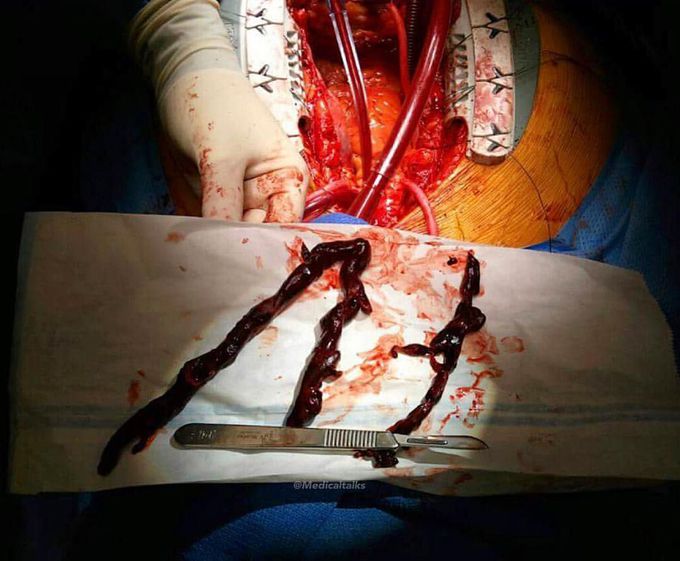


Massive pulmonary embolism
This is what a massive pulmonary embolism looks like outside of the body!! Pulmonary thromboembolism is an occlusion of the pulmonary vasculature by a blood clot and is not a disease in and of itself. Rather, it is a complication of underlying venous thrombosis, usually from a thrombi that originate in the deep venous system of the lower extremities. After the thrombi dislodges, it travels through the vena cava and into the right side of the heart to the lung, large thrombi can lodge at the bifurcation of the main pulmonary artery or the lobar branches and cause hemodynamic compromise. A drop vein thrombi and subsequent thromboembolic disease is suspected in patients that have long plane rides or are bed-bound following a major surgery or can infrequently occur with upper extremity, subclavian, and internal jugular vein thrombosis, which occurs in patients when intravenous catheters are placed in the associated veins. Also, in the pregnant patient, thrombosis may occur initially in the pelvic veins rather than follow the usual course of starting in the distal and then extending to the proximal veins. present with sudden onset of dyspnea, pleuritic chest pain, hypotension, tachycardia, tachypnea, right heart failure, and syncope. In patients with massive acute embolism, either catheter embolectomy or surgical embolectomy may be considered if they have clinical evidence of an adverse prognosis (ie, new hemodynamic instability, worsening respiratory failure, severe right ventricular dysfunction, or major myocardial necrosis).
Thank u for this info so far being an RN studied this,
Hemodynamic stimuli&nonhemodynamic stimuliEffects of sugar on teeth


